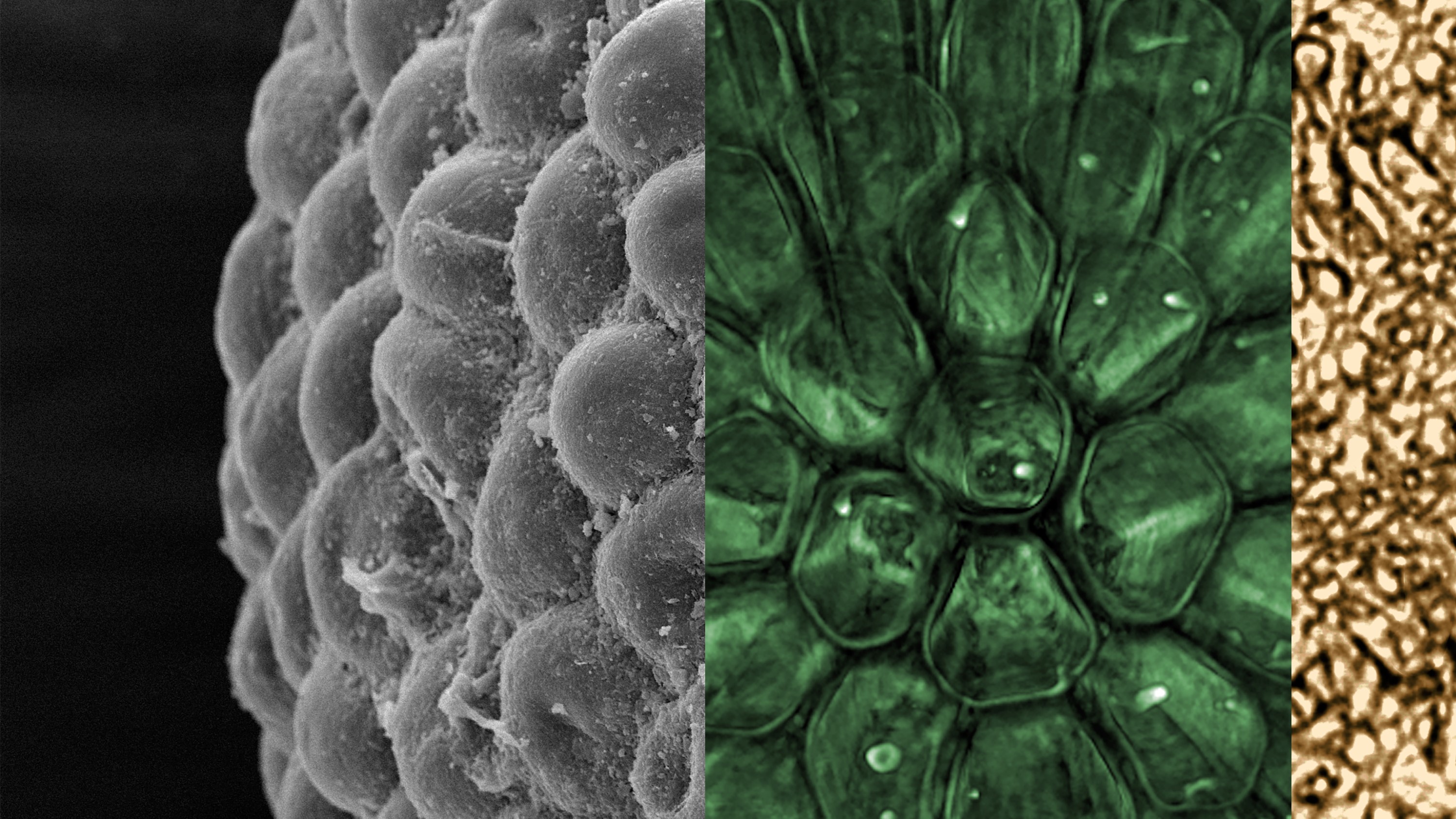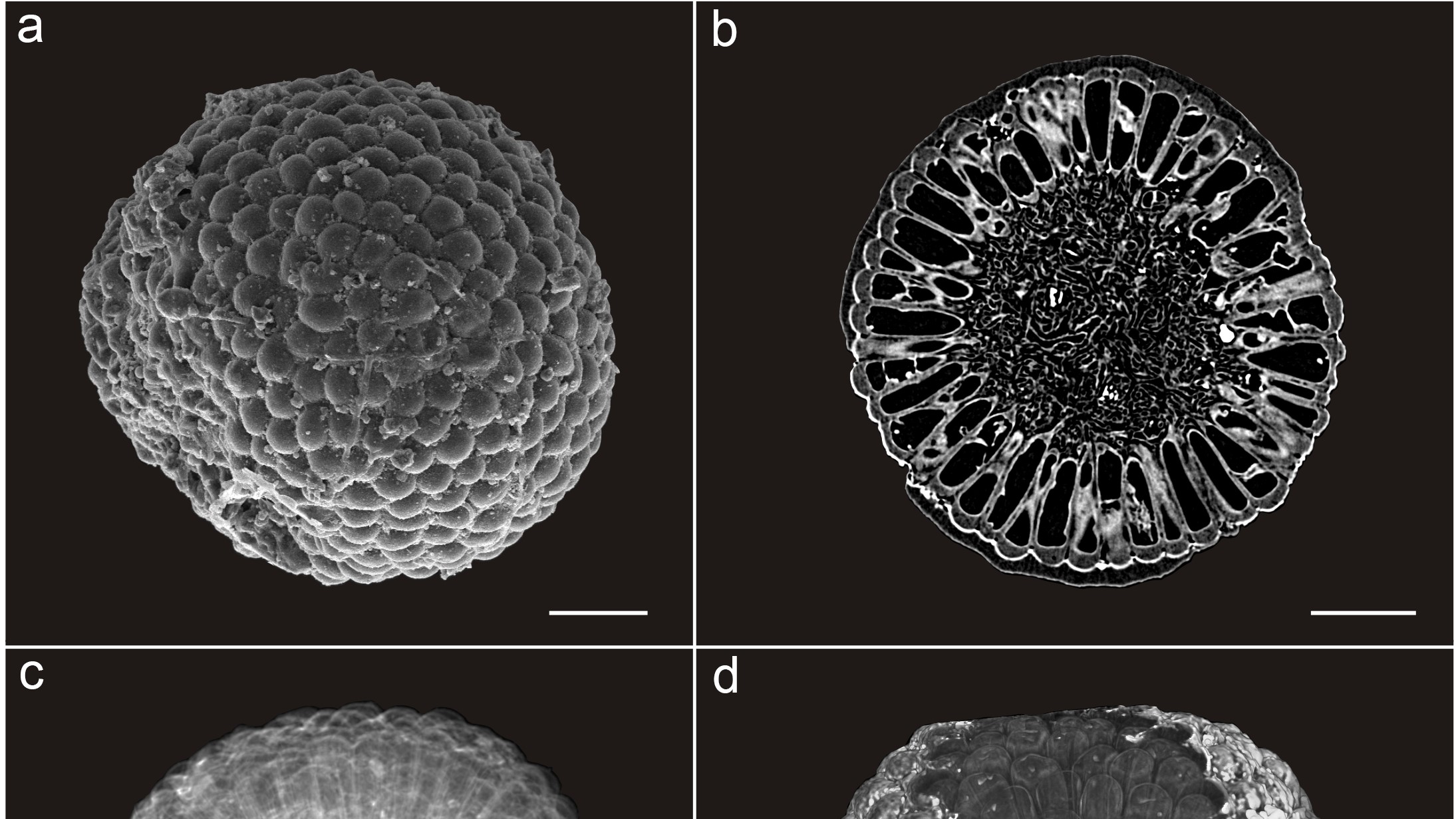Plants evolved even earlier than we thought, exquisite 3D fossils suggest
These organisms have survived virtually unchanged through 5 mass extinctions and half a billion years.

The oldest green algae preserved in three dimensions may hint that plants originated earlier than previously believed.
The fossils are older than 541 million years, putting them in the late Ediacaran period (635 million to 541 million years ago). This was at the cusp of the Cambrian period (541 million to 485.4 million years ago) when life suddenly diversified in a flash known as the Cambrian Explosion. The fossils are tiny — only half a millimeter in diameter — but are preserved in exquisite detail, down to the bumpy tubular structures that line their outer layers and the masses of delicate filaments that make up their core. They come from Shaanxi province in China, which was a shallow sea in the late Ediacaran.
Green algae are members of the plant kingdom that emerged at least a billion years ago, but the new finding, which shows that a diversity of modern-looking algae species existed earlier than thought, may push back the origin of the plant kingdom perhaps another 100 million years, the researchers reported Sept. 21 in the journal BMC Biology. The ancient algae are surprisingly complex, and almost identical to a modern genus of seaweed called Codium.
"Discovering something so close to Codium in the Ediacarian is likely going to push this origin of green algae and certainly the origin of the entire plant kingdom further back in time," said study co-author Cédric Aria, a postdoctoral researcher in ecology and evolutionary biology at the University of Toronto and Royal Ontario Museum.
A modern analogue
The specimens come from a rich deposit of fossils known as the Gaojiashan biota, a number of which are preserved in three dimensions rather than being squished flat. The study's co-authors from Northwest University in Xi'an, China, asked Aria to take a look at the five algae specimens, which didn't match anything else seen from the late Ediacaran elsewhere in the world.

Aria and his colleagues soon realized from the fossils' structure that they were green algae, but the researchers couldn't find anything similar in the known species of ancient algae, so they started combing through more recent species. That's when they discovered that the ancient algae looked almost exactly like the modern Codium. (Green algae comes in many forms, from single-celled plants to complex multicellular seaweed.) Other than the fact that the ancient algae were about half the size of a modern unicellular Codium, the algae were identical, Aria told Live Science.
"That was certainly a surprise," he said. "It was really a Eureka moment."
Sign up for the Live Science daily newsletter now
Get the world’s most fascinating discoveries delivered straight to your inbox.
Read more: What are algae?
It's generally thought that species from before the Cambrian Explosion were relatively simple, Aria said. But the new discovery of such a complex green alga from over 541 million years ago suggests more diversity in the Ediacaran than expected. It may be time to reevaluate some of the two-dimensional fossils from this era to see if they, too, could be Codium, Aria said.
Tough plants
The researchers named the new species Protocodium sinese, which means, roughly, "first Codium from China." The algae is a survivor, Aria said. The fact that it has remained basically unchanged since the late Ediacaran suggests that this group of green algae figured out their evolutionary niche early and somehow managed to hang on through five mass extinctions and more than half a billion years of change. Today, Codium species are invasive in many places, outcompeting native seaweeds and algae.
"It had a winning hand early on and just kept it," Aria said.
The new alga species was not a direct ancestor of today's land plants. By the late Ediacaran, Green algae had already split off from the branch that would later give rise to land plants. The new study does suggest that this split — and perhaps the advent of plant life in general — is deeper in history than previously believed. Scientists try to calculate the timing of organisms branching off from one another using inferences from the genomes of modern species and the rate of mutations seen in the paleontological record. If early green algae were more diverse than believed, it's likely that the entire evolutionary process started earlier than scientists thought, too, Aria said.
Originally published on Live Science

Stephanie Pappas is a contributing writer for Live Science, covering topics ranging from geoscience to archaeology to the human brain and behavior. She was previously a senior writer for Live Science but is now a freelancer based in Denver, Colorado, and regularly contributes to Scientific American and The Monitor, the monthly magazine of the American Psychological Association. Stephanie received a bachelor's degree in psychology from the University of South Carolina and a graduate certificate in science communication from the University of California, Santa Cruz.









